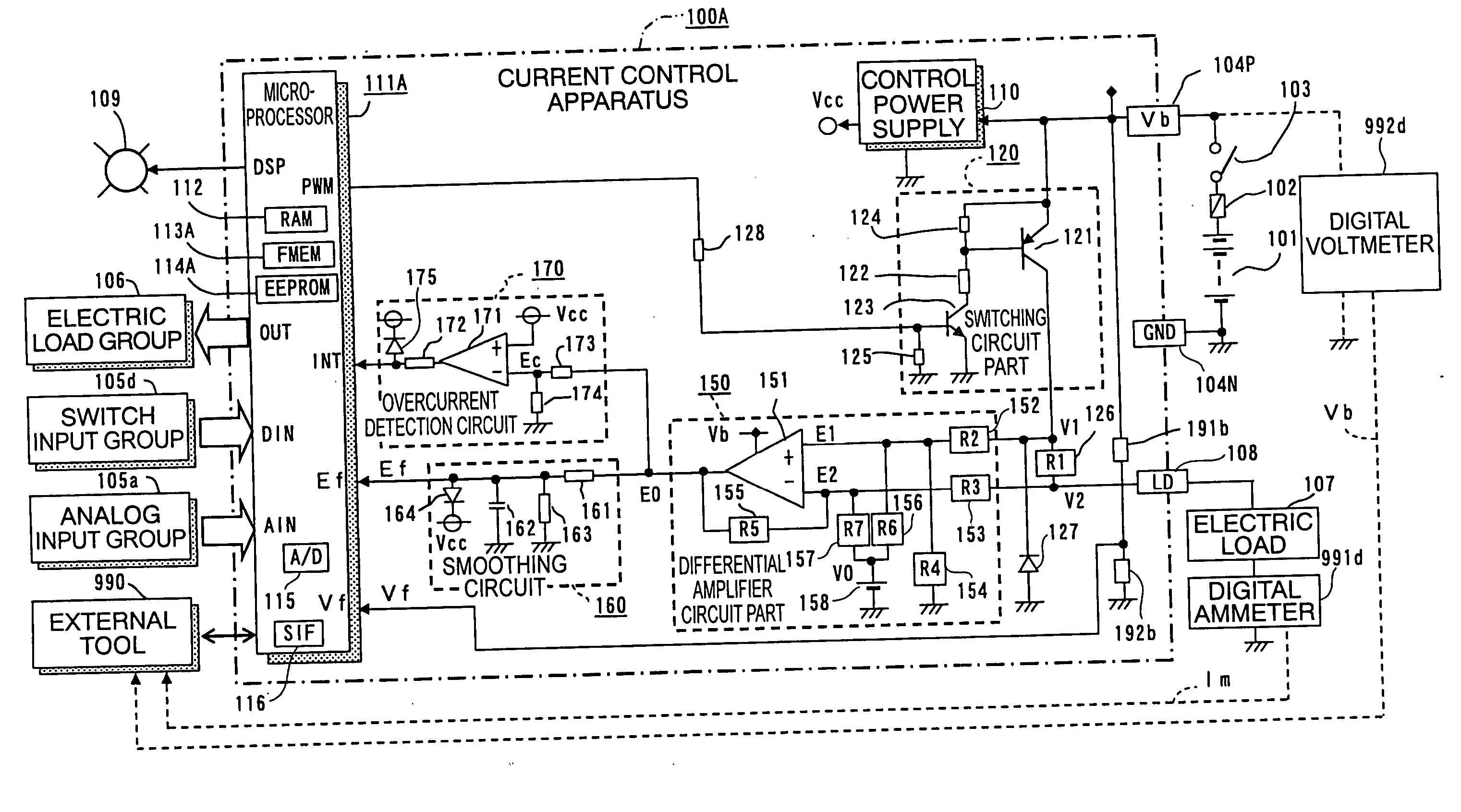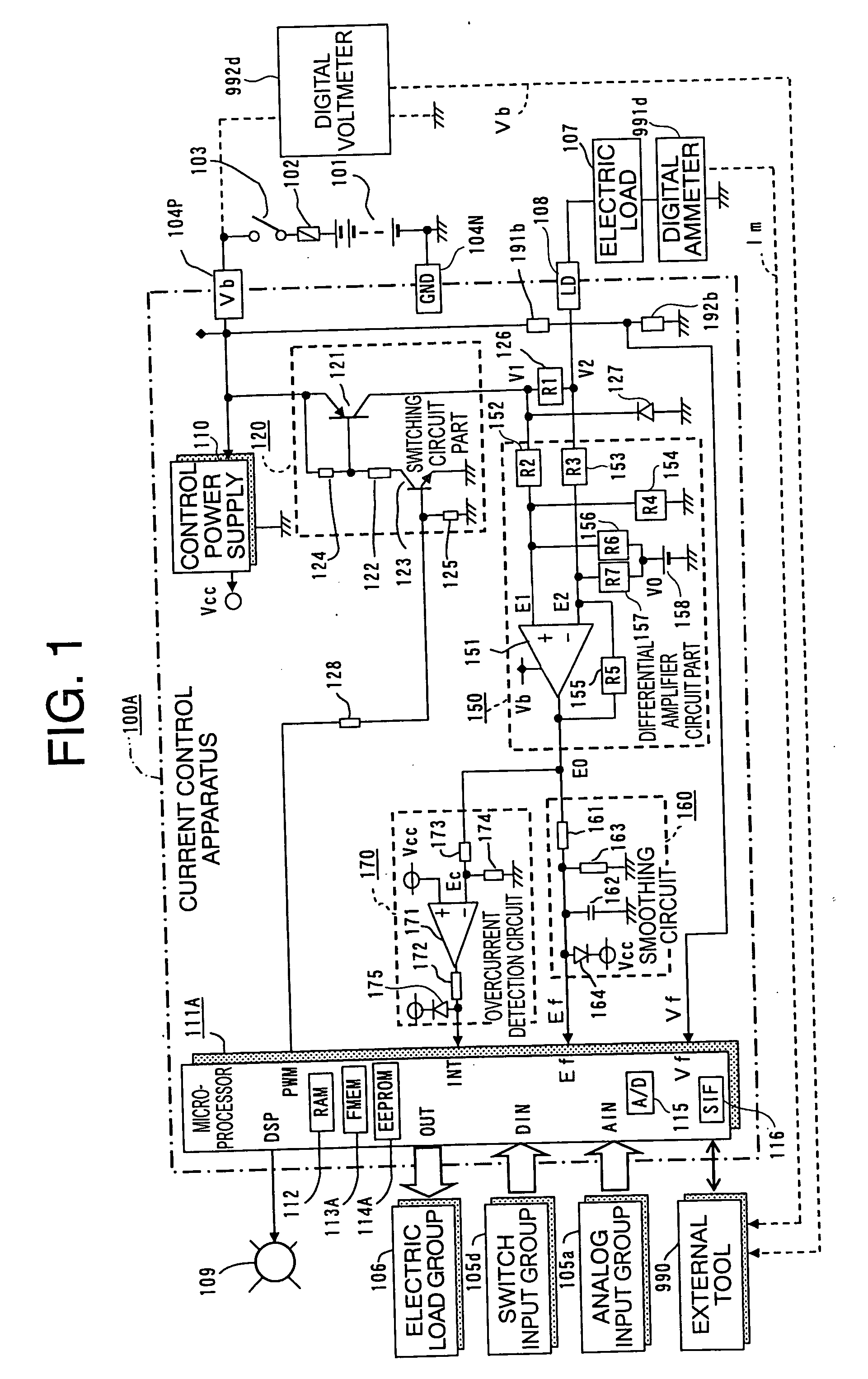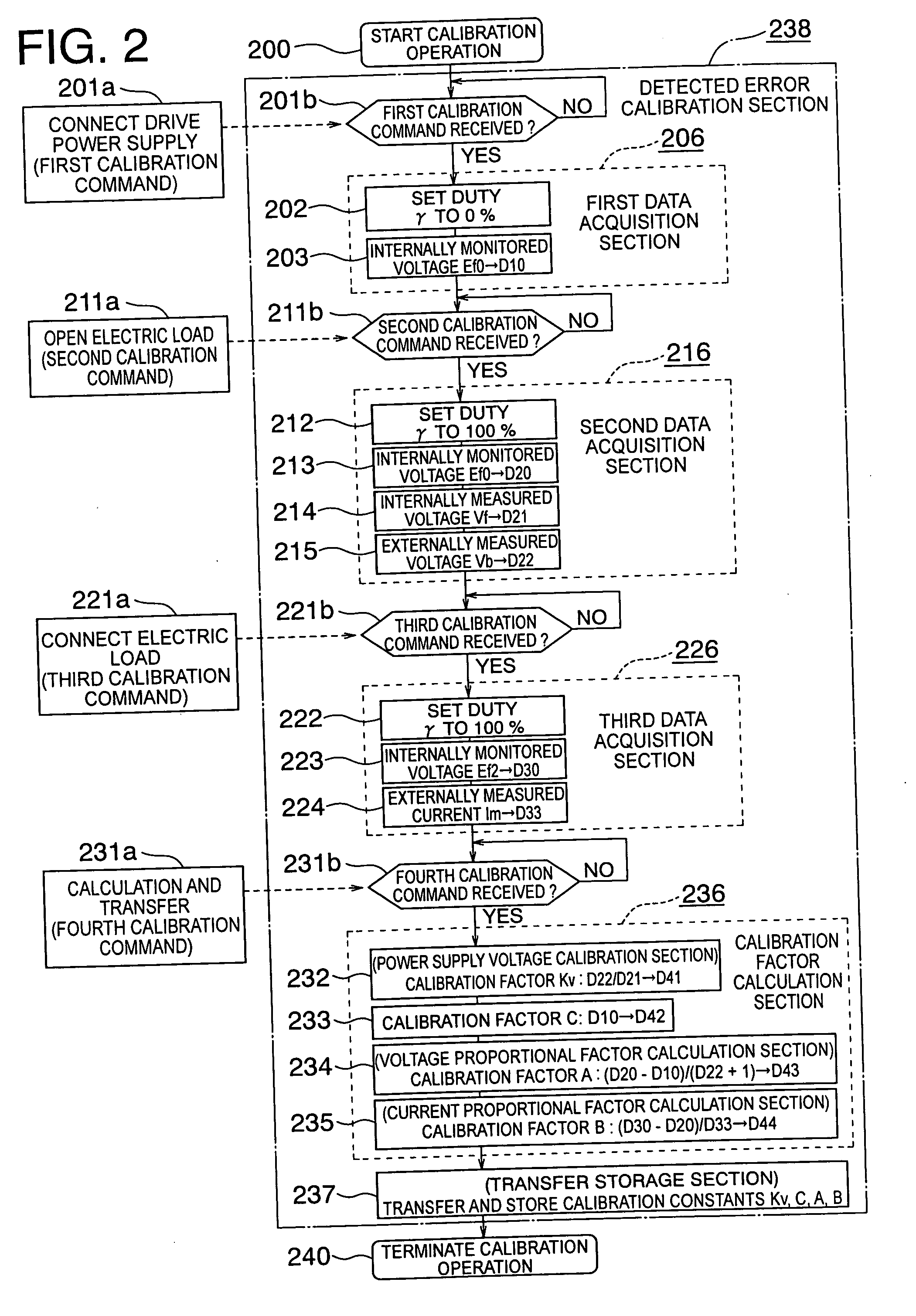Current control apparatus for electric load
a current control and electric load technology, applied in the direction of electric control, magnetic bodies, instruments, etc., can solve the problems of reducing the control load of the microprocessor, the inability to perform current interruption, and the complexity of the hardware configuration thereof, so as to improve the reduction of current detection accuracy, the effect of effective calibration elements and easy protection measures
- Summary
- Abstract
- Description
- Claims
- Application Information
AI Technical Summary
Benefits of technology
Problems solved by technology
Method used
Image
Examples
embodiment 2
[0229] In the above-mentioned first embodiment (see FIG. 1), a warning signal from the overcurrent detection circuit 170 is impressed to the interrupt input terminal INT, but as shown in FIG. 5, the switching element 121 can be made nonconductive at once through an abnormality occurrence storage circuit 181 that responds to the warning signal, and an abnormality warning determination signal can be impressed to an input terminal DEM of a microprocessor 111B.
[0230] Hereinafter, a second embodiment of the present invention will be described with emphasis placed on its differences from the above-mentioned first embodiment as shown in FIG. 1 while referring to the accompanying drawings.
[0231]FIG. 5 is a circuit block diagram that shows the overall construction of a current control apparatus for an electric load according to the second embodiment of the present invention, and the parts or components same as those described above (FIG. 1) are identified by the same symbols or by the same...
embodiment 3
[0291] Although in the above-mentioned second embodiment (see FIG. 5), the power supply monitoring voltage Vf detected by the power supply voltage measuring circuit (the voltage dividing resistors 191b, 192b) is input to the microprocessor 111B, the average measured voltage Ea may instead be input to a microprocessor 111C as the average monitored voltage Va, as shown in FIG. 7.
[0292]FIG. 7 is a circuit block diagram that shows the overall construction of a current control apparatus for an electric load according to a third embodiment of the present invention, and the same parts or components as those described above (FIG. 5) are identified by the same symbols or by the same symbols with “C” affixed to their ends, while omitting a detailed explanation thereof.
[0293] In FIG. 7, a current control apparatus 100C includes, similar to the one as described above, a microprocessor 111C which is fed with electric power from a control power supply 110, a switching circuit part 120, a differ...
PUM
| Property | Measurement | Unit |
|---|---|---|
| voltages | aaaaa | aaaaa |
| voltages | aaaaa | aaaaa |
| voltage | aaaaa | aaaaa |
Abstract
Description
Claims
Application Information
 Login to View More
Login to View More - R&D
- Intellectual Property
- Life Sciences
- Materials
- Tech Scout
- Unparalleled Data Quality
- Higher Quality Content
- 60% Fewer Hallucinations
Browse by: Latest US Patents, China's latest patents, Technical Efficacy Thesaurus, Application Domain, Technology Topic, Popular Technical Reports.
© 2025 PatSnap. All rights reserved.Legal|Privacy policy|Modern Slavery Act Transparency Statement|Sitemap|About US| Contact US: help@patsnap.com



